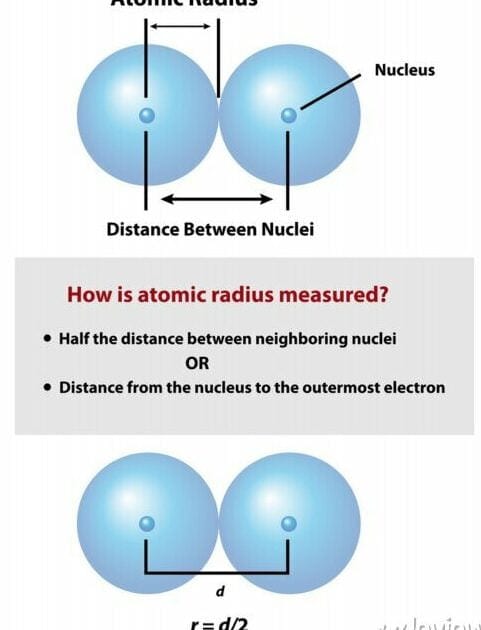
Each celestial body possesses a core within its structure. Typically, this core is comprised of multiple layers, serving as a foundational element for the spherical body. The substances present within the core exhibit extraordinary properties. For instance, iron, found at significant depths in the central region of the planet, has the ability to crystallize or exist in a liquid form.
What is the Core of the Earth
The Earth’s core is the innermost part of our planet, situated beneath the mantle and primarily composed of a mixture of iron and nickel. It is composed of two distinct layers.

Investigating the characteristics and makeup of the Earth’s core is a challenging endeavor due to its location, which is 2900 kilometers beneath the surface. As one delves deeper into the planet, the temperature steadily rises, leading to the malfunction of electronic devices and technical apparatus.
All the information about the central region of the Earth has been gathered through seismic wave observations. Additionally, scientists closely monitor the magnetic field to analyze the core’s rotation.
Composition and structure
Despite the challenging nature of studying the core of our planet, scientists have successfully determined the physical properties of its central region. The primary constituent of the Earth’s core is liquid and crystalline iron. It is also believed that nickel exists in the center of our celestial body.

Size
The core sphere has an average circumference of 3500 km. The inner solid part has a radius measuring 1300 kilometers. The upper liquid layer is no more than 2200 km thick.
Distance to the Earth’s core
No one has been able to reach the innermost part of the planet yet. The melting point of volcanic lavas is around 220-300 km deep, and the formation of precious rocks like diamonds doesn’t occur below 500 km. Anything deeper than that remains a mystery. However, scientists have discovered a method to determine the distance to the Earth’s core using seismology.

During seismic events, the Earth experiences the formation of intense shock waves that reverberate across the globe. These vibrations traverse the entire planet, but interestingly, while earthquakes occur on one side of the Earth, the oscillating waves are dampened on the opposite side. Through careful analysis of this phenomenon, scientists have determined that S-waves, one of the types of seismic waves, collide with the solid and liquid layers, leading to their suppression.
Upon reconstructing a map depicting the movement of these oscillating waves, researchers have discovered that there are regions of liquid rocks located approximately 3000 km away from the epicenter.
Mass
Scientists have determined that the weight of our planet is 5.9 sextillion tons (59 20 ) by studying its gravitational field. The surface layer has a lower density than the overall average, suggesting that the interior of the Earth is composed of solid and dense rocks. Additionally, the liquid layer accounts for 30% of the planet’s total mass.
The Earth’s Core Temperature
It is common knowledge that the deepest central portion of our planet is composed of two layers: the outer liquid layer and the inner solid layer. The temperature between these layers, at a pressure of 3.3 million atmospheres, ranges from +6000°C to +6500°C. This temperature is actually hotter than the Sun. The outer core, which is hotter, does not cool down because it emits powerful streams of magma that spread out to the sides and approach the mantle’s surface. As a result of the friction between the outer layer and the Earth’s center, the temperature increases. Due to these ongoing processes, the core of our planet stays hot. The Earth doesn’t have enough time to cool down, as its inner solid layer forms from the cooled and crystallized remnants of iron. Scientists hypothesize that eventually, the entire central section might solidify, marking the beginning of the end.

The Role of the Magnetic Field
One of the crucial defenses against the harmful radiation emitted by the Sun is the presence of a magnetic field. This magnetic field is generated by a liquid layer composed of iron and nickel. Additionally, the outer layer of the Earth’s core heats up the surrounding mantle to such an extent that it results in the eruption of magma flows through volcanoes. The presence of an active magnetosphere played a significant role in the emergence of life on Earth, distinguishing it from other celestial bodies.
What is the average distance from the Earth’s surface to its core?
The Earth is not a perfect sphere, but rather a flattened ellipsoid. As a result, the distance from the surface to the core varies in different locations. However, we can calculate the average distance.
Due to the Earth’s rotation around its axis, there is an equatorial bulge, causing the planet to be slightly flattened. The difference in diameter between the equatorial and polar regions is approximately 43,000 meters.
In order to address this inquiry, it is necessary to ascertain the average radius of the Earth, which is equivalent to 6371.0 km. Additionally, we possess knowledge regarding the radius of the core, which measures approximately 3500 km. By conducting some straightforward calculations and rounding the result, we can deduce that the distance from the Earth’s surface to its core is approximately 2,900 kilometers.
Naturally, it is important to acknowledge that these measurements are merely estimations. Firstly, our planet exhibits an irregular surface, and secondly, the demarcation line between the core and the mantle is indistinct.
Humanity is insignificant in the face of the immense power of nature. Despite our belief that we have the ability to understand and control everything, the truth is that our knowledge of the world is still limited. There are countless mysteries and unexplored territories that remain beyond the reach of science and technology. However, what may have seemed impossible in the past is now a tangible reality.
The Foundation of Our Planet: The Earth’s Core
What exactly is the Earth’s core? In simple terms, it is the central and most inner part of our planet. Scientifically referred to as the geosphere, it resides beneath the mantle. Through extensive research and exploration, scientists have discovered that it primarily consists of an iron-nickel alloy, along with various other elements. In terms of distance from the surface, the core is located approximately 2900 kilometers below. The geosphere’s radius is estimated to be around 3500 kilometers.
Undoubtedly, our understanding of the Earth’s concealed layers is solely speculative. As it stands, we lack the capability to physically descend and comprehensively explore our planet. Nevertheless, a plethora of scientific investigations and experiments contribute to a certain framework of knowledge about the Earth.
Perhaps in the future, we will acquire a more profound understanding of our abode. The crux of the matter lies in having a clear objective and a fervent desire. Let the passage of time and the progress of research and technology handle the rest.
It is worth mentioning that the examination of the Earth’s structure and composition is a subject of interest for numerous scientific disciplines. For instance, geochemistry, cosmology, and geonomy.
Actually, the Earth’s structure, specifically its core, can be divided into:
- The inner core, which scientists estimate to have a solid structure and a radius of 1300 kilometers;
- On the other hand, the outer core, unlike the inner core, is liquid and has a thickness of approximately 220 kilometers;
- Furthermore, there exists a transitional layer between them.
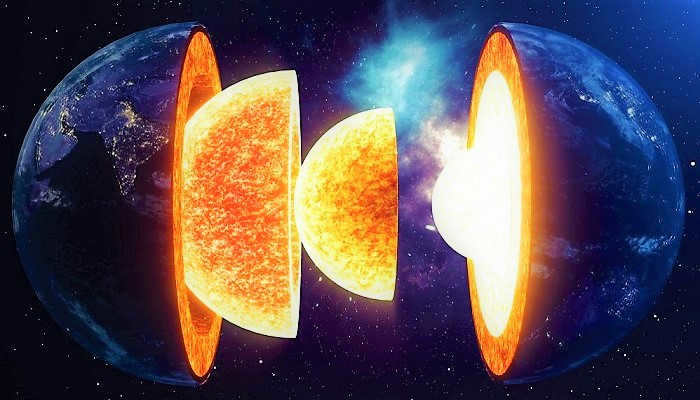
The Earth’s core, both inner and outer, holds significant importance in the planet’s existence and development. Scientists state that the inner core has a temperature of 12.5t/m³, while the outer layer fluctuates around 6230 +/- 500 K.
The Earth consists of various shells, namely the atmosphere, hydrosphere, lithosphere, and biosphere. Each plays a crucial role in the planet’s life. However, the core stands out as the most essential component. It serves as the origin of everything else, and without it, life as we know it would not be possible. Unfortunately, it’s often overlooked and underappreciated.
Undoubtedly, the inner composition of the Earth remains a puzzle that has yet to be fully solved. The brightest intellects of humanity are tirelessly striving to unlock its secrets. Meanwhile, all we can do is observe in awe.
The Earth, with its intricate structure, serves as a remarkable enigma, encompassing not only our existence but also the wonders that surround us.
Rivers symbolize the Earth’s sorrow, while smiles represent its blossoming beauty. Infants, in their innocence, possess the soul of poets. And, in my perspective, wherever you may be, the heart of this vast planet continues to beat.
What is the distance to the Earth’s core in kilometers?
A recent news article highlighted the work of Alexander Klotz, a student from a Canadian university, who has managed to calculate the time it would take for an object to fall through a tunnel and reach the center of the Earth. According to his calculations, it would take approximately 38 minutes. This fascinating information naturally raises the question of the actual distance to the Earth’s core in kilometers. Scientists are able to provide precise measurements for this.
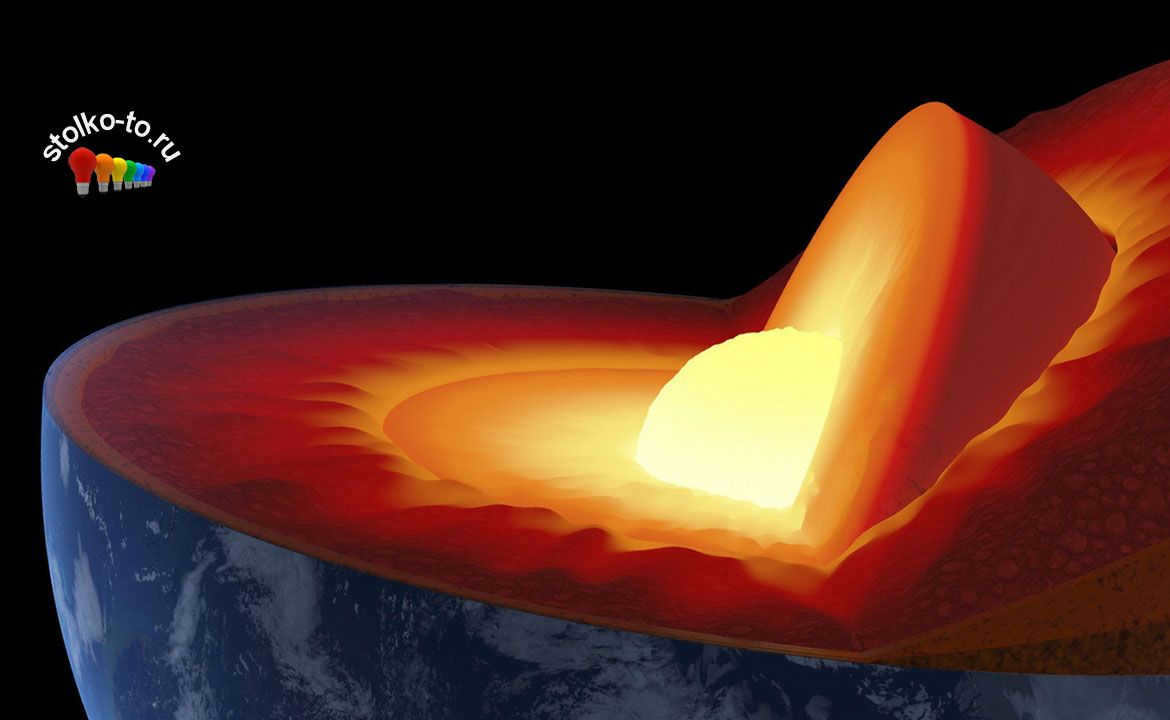
Calculating the Distance to the Earth’s Core
To determine the exact number of kilometers to reach the Earth’s core, we need to first comprehend the shape of our planet. It takes the form of a slightly flattened ellipsoid. While the Earth could also be referred to as a geoid, it would ideally consist of entirely liquid matter. The topography is also quite diverse. Here are some intriguing facts about the Earth’s topography:
- The highest point on the Earth’s surface is Mount Everest, towering at an elevation of 8,848 meters above sea level.
- The Mariana Trench holds the record for the deepest point on Earth, plunging down to a depth of 10,994 meters below sea level.
- The equatorial diameter exceeds the polar diameter by a margin of 43 kilometers.
The calculation of the distance to the center of the Earth in kilometers is based on the polar and equatorial radii, which are 6356.77 km and 6378.160 km respectively.
What is the distance to the center of the Earth according to Wikipedia?
Considering that the Earth is not a perfect sphere, the average distance to the center of the Earth is estimated to be 6371.3 kilometers.
Interestingly, the distance to the Earth’s core is much smaller – approximately 2900 kilometers, which is half the distance to the center. As for its composition, scientists have differing opinions.
There are some assertions that state the core is primarily made up of iron and nickel, while others believe that the core has a composition distinct from that of the lower magnesium, with highly compressed substances in a metallized state.
According to scientists, it is deemed impossible to reach the Earth’s core and survive due to its temperature, which is nearly five thousand degrees, comparable to the surface of the Sun. Additionally, the pressure at a depth of 6317 kilometers is three million times greater than that on the planet’s surface. Therefore, even if you were to imagine being several kilometers away from the Earth’s center, you would be torn apart.
If you’re curious about the location on Earth that is closest to its center, look no further than the North Pole. Specifically, the bottom of the Arctic Ocean is just four kilometers away. On the other hand, if you’re looking for the greatest distance from the center, you’ll find it near the equator. In fact, the distance there is a whopping 1638 kilometers, which is 21 kilometers more than the average.
How many kilometers to the core: measuring the distance to the center of the Earth
The measurement of the distance to the center of the Earth in kilometers is a complex and ambiguous task that scientists from different countries approach in various ways. Regrettably, human beings have less knowledge about the internal structure and rotation peculiarities of their own planet compared to the nearby celestial bodies. The intricate calculations conducted in the global scientific community, aimed at determining the exact distance to the center of the Earth in kilometers, often yield varying results.
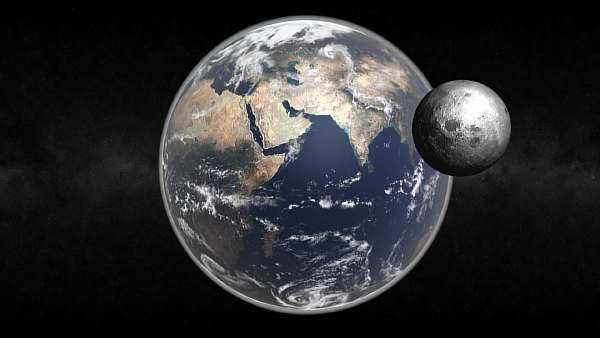
Overview of the question’s historical context
The existence of various theories regarding the internal composition of the planet can be attributed to the contrasting mentalities, worldviews, and scientific research capabilities throughout history. Humanity has been prone to entertaining a multitude of hypotheses, leading to both paradoxical and persistent ideas.
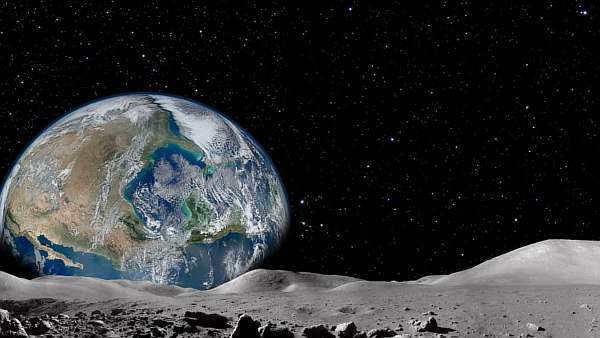
Russia and the former Soviet Union have relied on data collected in 1940 by Feodosy Nikolaevich Krasovsky, a renowned Soviet astronomer, geodesist, and corresponding member of the USSR Academy of Sciences.
From the widely accepted scientific theory taught in schools, which states that the Earth consists of a crust, core, and mantle, containing all the necessary elements for life. To the extraordinary notion that there are empty spaces within the planet, inhabited by strange and incomprehensible creatures or serving as an underworld.
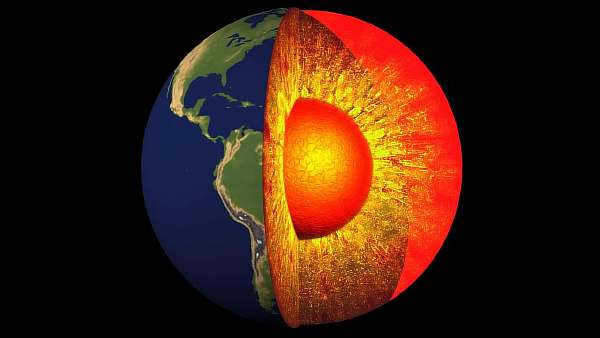
The quest to find the answer to this intriguing question – how far is it to the Earth’s core, carries with it a combination of theoretical, practical, and even mystical elements:
- Efforts to delve deep into the depths of the blue sphere have been unsuccessful thus far, reaching only a depth of around 12 kilometers. Countless incredible tales have been spun about these attempts, and Academician Obruchev even penned a science fiction novel about a voyage to the center of the Earth, which captivated audiences for years. Even the surface of our planet remains largely unexplored, not to mention the vast expanse of the world’s oceans, which are considered to hold the true shape of the Earth, despite being situated several tens of meters below the surface of the Krasovsky ellipsoid.
- To determine the accurate distance to the center of the Earth, it is common to use an average value. However, in a dynamic and ever-changing Galaxy, this distance can vary depending on the location and method of measurement. The true nature of the center is still a mystery, whether it is a solid core that generates the planet’s magnetic field or if it is inhabited by enigmatic creatures who mistake the crust for a celestial surface.
- For pseudoscientific websites, the topic of the Earth’s contents is incredibly popular. Throughout history, our ancestors were just as fascinated by what lies beneath their feet as they were with the distant skies above.
- For those astronomers who are captivated by the arrangement of the cosmos, the definitive resolution to the quandary faced by students regarding the distance in kilometers to the Earth’s core is simply discovering an alternative astronomical measure to incorporate into their computations.
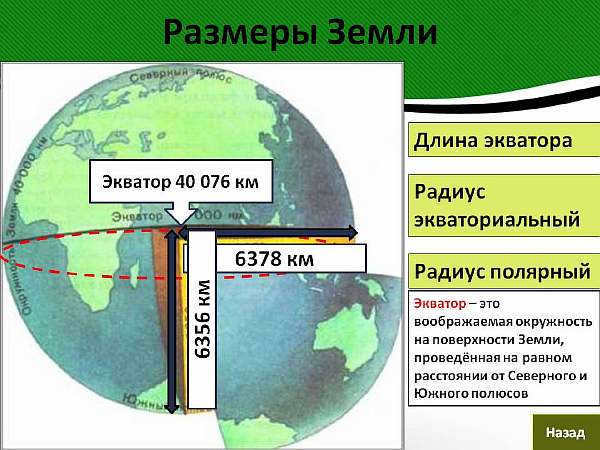
Numerologists and enthusiasts of the magic of numerical coincidences would love to classify the Earth’s radius along with all the planets in the solar system, including Pluto, as 384000 km. This distance is considered the conventional axiom for the distance to the Moon.
In their search for similar patterns, they overlook the existence of other dwarf planets or the fact that Pluto is no longer classified as a planet in the Solar System.
And they certainly don’t consider the possibility of another dwarf planet regulating these patterns. When they claim that the Earth fits within a distance of exactly 384400 km 30 times, they conveniently forget about the thousands of kilometers that remain after such an arrangement.
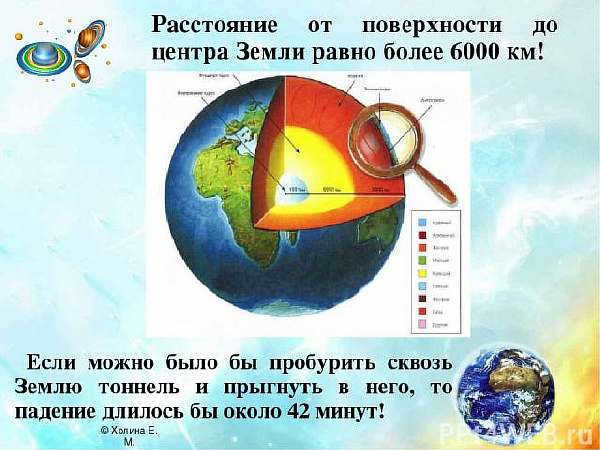
Galaxy
The vastness of the Milky Way is beyond comprehension for the average person. This unfathomable distance also has an indirect impact on Earth, specifically in terms of the distance between its surface and the galactic center. As per the principles of the universal law of gravitation, every celestial object in the cosmos exerts influence on its neighboring bodies.
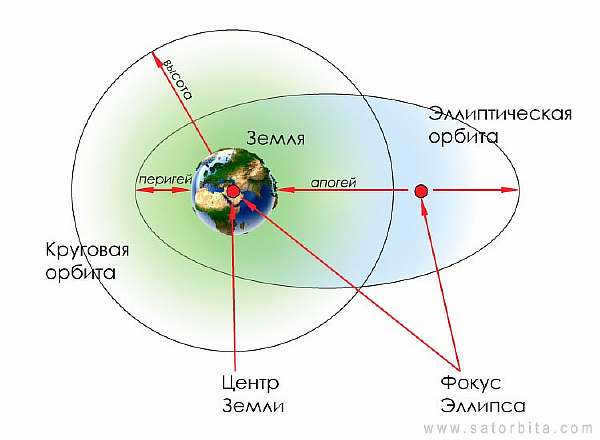
It is relatively easy to determine the connection between the current shape of the Earth and the Milky Way. This can be achieved through calculations involving trajectories, orbits, and interactions.
F. N. Krasovsky, a geodesist and astronomer, made a significant discovery by introducing the concept of the ellipsoid. This model provides a more accurate representation of the Earth’s shape compared to the traditional globe, which depicts it as a sphere. A. A. Izotov, another geodesist and member of the All-Union Astronomical and Geodesic Society at the Academy of Sciences of the USSR, also contributed to this research.
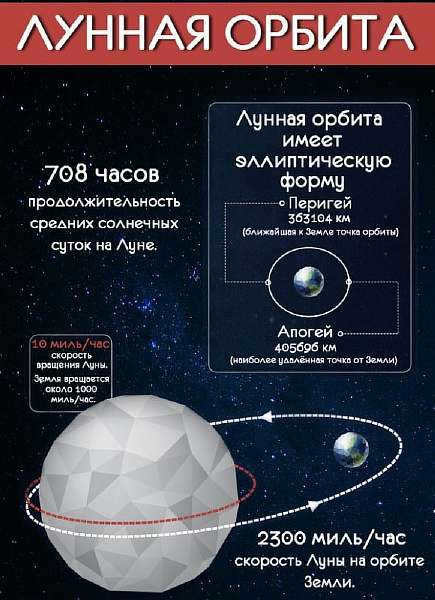
It is evident from this evidence that even prior to the Great Patriotic War, individuals with profound knowledge possessed a clear understanding of the infeasibility of studying the planet in isolation from outer space, as well as investigating outer space without a profound understanding of the Earth’s structure, shape, velocity, and orbit.
To determine the distance to the hypothetical center of the sphere, it is sufficient to calculate the diameter and divide it by two. This presents a simple and direct approach to conducting distance calculations to the Earth’s center, assuming the planet is indeed spherical in shape.
However, due to its constant motion and the influence of celestial bodies of varying sizes, the Earth was compelled to alter its configuration, resulting in variable figures for its radius in different locations.
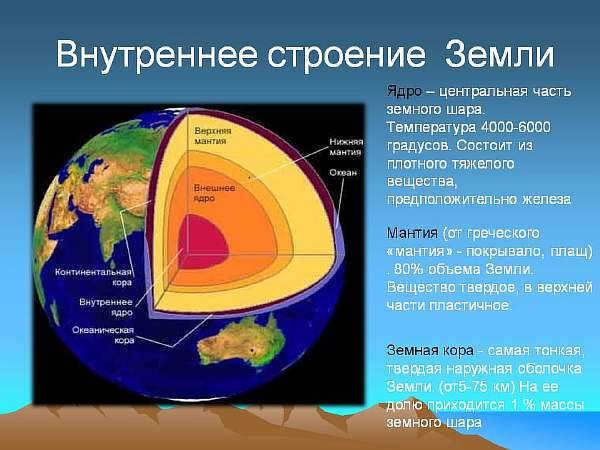
In the early days of space exploration, when the focus was on planning rather than conducting research, Izotov and Krasovsky had to find alternate methods to determine the true shape of the Earth. It wasn’t until three decades later, when the first artificial satellite was launched, that their findings were validated.
The conventional measurement for the average distance from the Earth’s surface to its center is 6371.032 kilometers, representing the difference between the equatorial and polar radii.
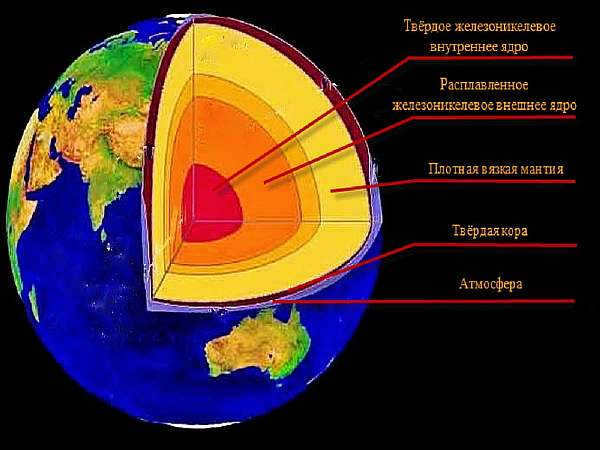
By considering that the surface of the Earth spans over 510.2 million square kilometers, it is reasonable to assume that there are numerous other locations where the distance between the surface and the center varies within different ranges. The maximum distance is 6378.160 km, which occurs at the equator, while the minimum distance is 6356.777 km, observed at the pole. This means that the difference between the largest and smallest figures is a staggering 21383 km.
The vast expanses of the Earth’s surface offer a multitude of points where the distance to the center can fluctuate within various limits.
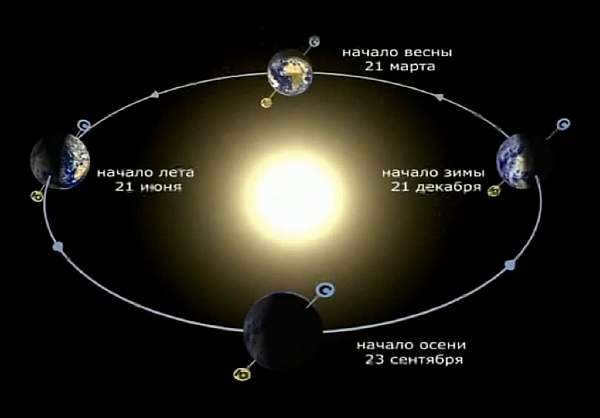
The distance from the Earth’s core can vary due to tectonic movements, measurements taken from mountain tops or ocean trenches. However, the distance is largest at the equator and smallest in Antarctica. In order to reconcile different scientific perspectives, a definition has been established – the geoid.
The geoid is the shape of the Earth, which is formed as a result of its rotation around its axis and around the center of mass of the solar system. The formation of the geoid was influenced not only by one satellite, but also by its two closest neighbors in space. Additionally, other satellites, both near and far, have also played a significant role in its formation.
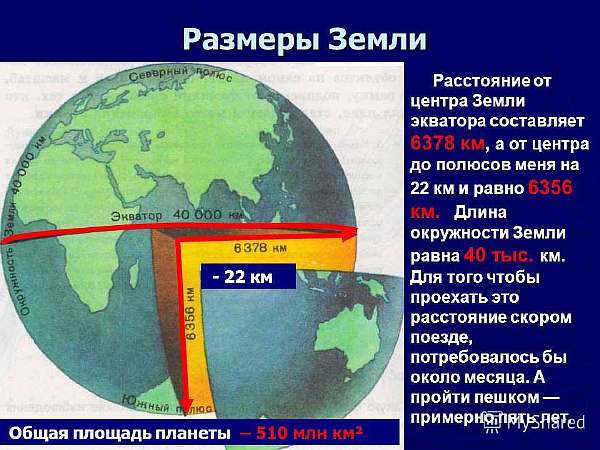
Looking for a suitable term, the three-axis ellipsoid and spheroid were proposed. Scientific communities were challenged to find a more fitting representation of the true situation.
The paradoxical aspect of this representation is that a mountain situated at the pole, standing 10 km tall, is closer to the planet’s center than a similar depression near the equator.
An intriguing example involving mountains is also worth noting: Jomolungma, which is 2.5 km higher than the equatorial peak of Chimborazo, is actually 2 km closer to the Earth’s center, since sea level at the equator is four kilometers higher than at the location of the highest point in Asia.
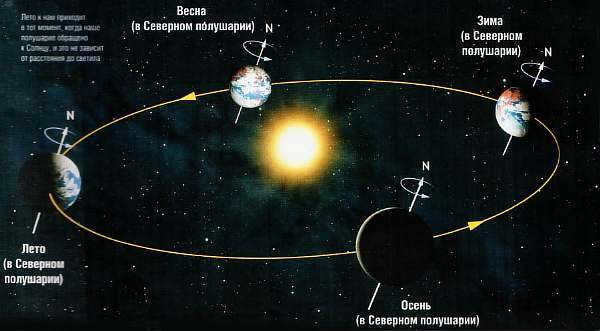
The contribution of Soviet scientists in determining the Earth’s shape and the distance from its center to the surface
The Soviet Union and its scientists made a significant contribution to determining the shape of the Earth and the distance from its center to the surface. This distance, which is actually not equal to the distance from the center to the surface of a globe, holds great importance in understanding the Earth’s structure.

- The Central Research Institute of Geodesy, Aerial Photography and Cartography was established by Theodosius Krasovsky, who is also its founder;
- Krasovsky also devised a research program in astronomy and geodesy, which led to the creation of astronomical and geodetic networks across the Soviet Union;
- The country, facing various needs, managed to allocate funds for the construction of these networks, enabling topographical surveys to be conducted;
- The purpose of these surveys was to determine the shape and size of the planet, which, although not the most pressing scientific problem at the time, held promising prospects for future research;
- The results of the measurements in 1940 led to the determination of the Earth’s shape as an ellipsoid, a finding that continues to be utilized in Russia and other countries, albeit not universally.
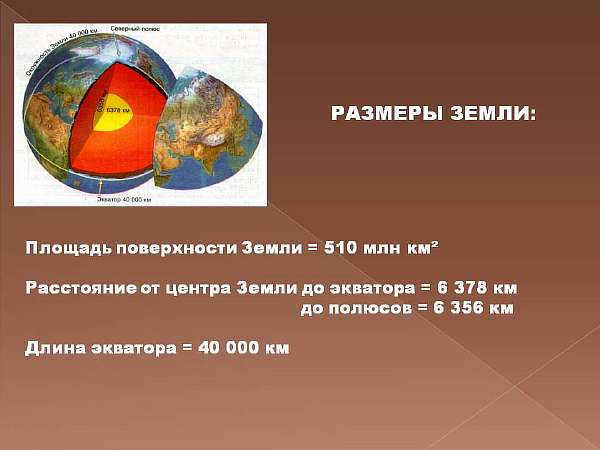
The Soviet Union stood alone in its vast astronomical and geodetic measurements. Despite suffering significant setbacks in the Great Patriotic War, which greatly hindered the country’s progress in welfare and science, the entire territory of the state was successfully covered by state triangulation networks by 1970.
These measurements not only allowed for the calculation of distances from the Earth’s surface to its core (approximate radius of an irregular sphere) from any location on the planet, but also solidified the USSR’s undeniable leadership in space exploration.
The International Astronomical Union chose to honor the Russian genius of cartography and geodesy, Theodosius Krasovsky, by assigning his name to one of the craters on the lunar surface. Additionally, they named the ellipsoid discovered by Krasovsky after him – the Krasovsky ellipsoid.
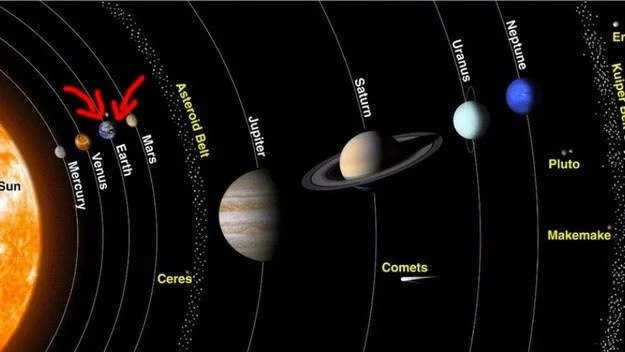
The knowledge about the various sizes and distances of planets would have remained unknown to science and would have been determined through general calculations if research had not been conducted.
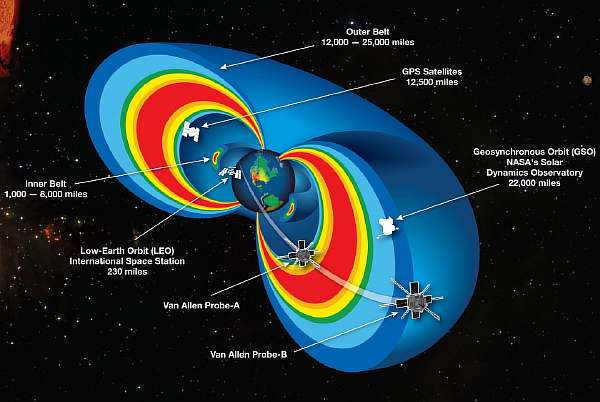
By taking into account the latitude, equatorial radius, and polar radius, it becomes feasible to precisely calculate the distance of any location on Earth’s surface (regardless of whether it is a peak or a valley) from the core of our planet. The equatorial radius measures 6378.160 km, while the polar radius is 6356.777 km.
Our Planet © 2023
The information provided on this website is solely for informational purposes.
Following the exploration of the New World, the era of the Great Geographical Discoveries came to a close, yet the legacy of these remarkable explorers continued to inspire future generations of scientists. While some directed their gaze towards the celestial heavens, others were captivated by the depths of the ocean, and still others chose to delve into the earth, both literally and metaphorically. Their achievements and contributions have not ceased to fascinate me, so I would like to share some insights from their research.
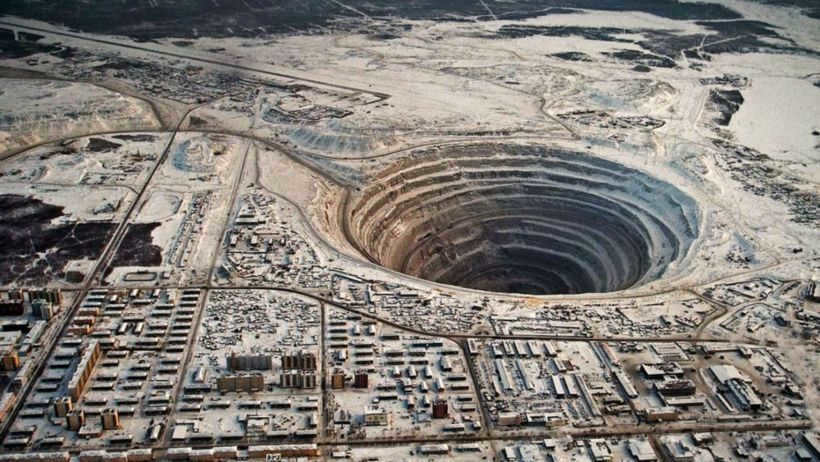
The Earth’s Inner Core
The inner core of our planet is an enormous metallic sphere situated approximately 3000 kilometers beneath our feet.
Credit for its discovery goes to seismologists who have extensively studied seismic waves within the Earth’s interior. This research has enabled them to analyze the composition of different layers and determine the depths at which these structures are located.
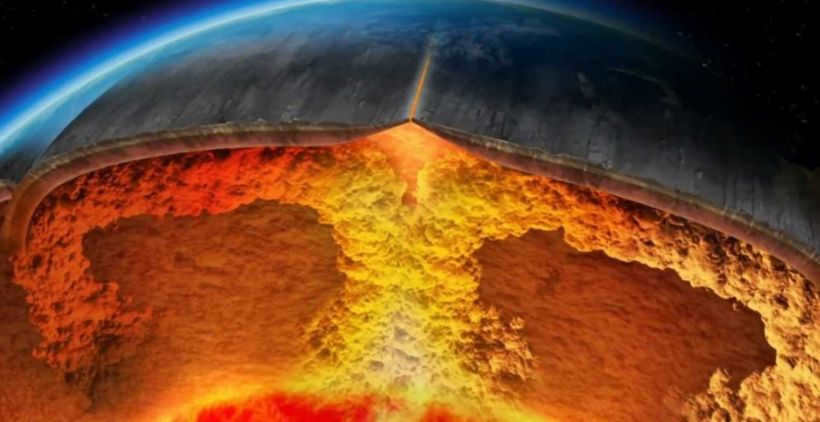
According to scientists, the Earth’s internal structure is not uniform and consists of various layers:
The innermost layer, known as the core, is entirely composed of metal and nickel. Due to differences in their physical states, the core is further divided into two layers: the inner core, which is solid, and the outer core, which is liquid.
The inner core has an extremely high temperature of 5400°C, which causes the outer core to melt. However, despite this high temperature, the inner core remains solid due to the immense pressure exerted on it by the planet’s mass. This pressure also contributes to the high temperature of the core.
The outer core experiences constant convection of molten metals.
The significance of the planet’s core in sustaining life
The Earth’s core plays a crucial role in the development and preservation of life on our planet. It is responsible for the formation of a magnetic field, which is essential for the existence of various forms of life, including humans.
The constant movement of molten metal in the outer core creates a magnetic shield around the Earth, known as the geomagnetic ball. This shield acts as a protective barrier, shielding all living organisms from harmful solar radiation and preventing the erosion of the atmospheric layer.
Furthermore, the magnetic field generated by the core is utilized by both navigational equipment and birds for orientation. It serves as a natural compass, allowing birds to navigate their migration routes and enabling humans to accurately navigate through the vast oceans.
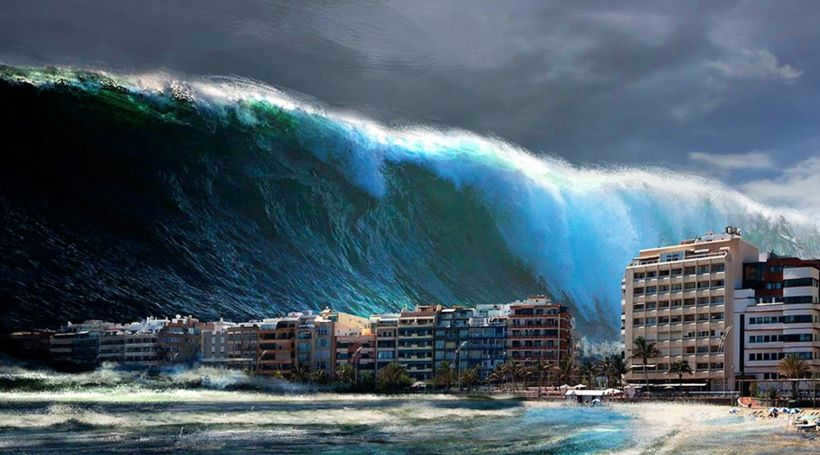
There are also some adverse consequences that can be caused by the processes occurring in the core:
- volcanic eruptions;
- earthquakes;
- tsunamis;
- tectonic plate movements.

Have you ever come across the book “Journey to the Center of the Earth” that vividly describes the inner workings of our planet? According to Jules Verne, there is a fascinating world beneath the Earth’s surface. However, it is important to note that Verne’s story is purely fictional. So, what does science have to say about this? Let me enlighten you.
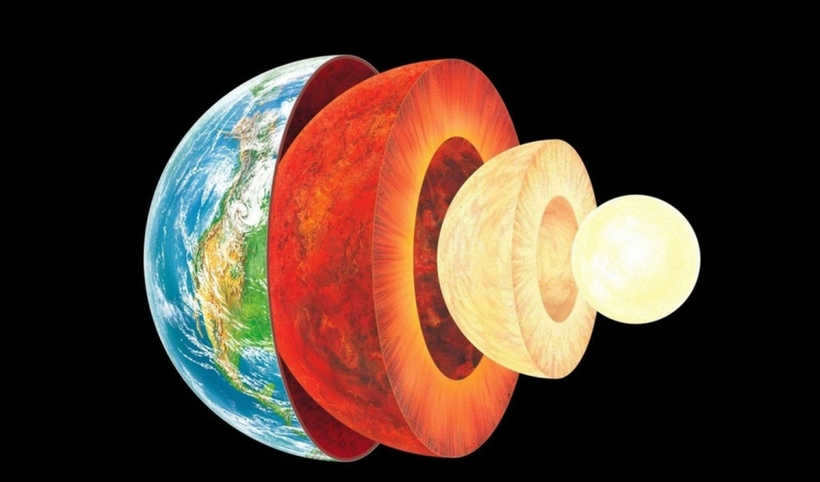
What do we know about the Earth’s core?
Studying the Earth’s core is a challenging task due to its depth of almost 2900 kilometers. The high temperatures make it difficult to drill a well to reach the core. However, scientists have a method called seismography that allows them to gather data on the core’s structure as well as the entire planet. Seismography is based on the principle of wave propagation through the subsurface, where the waves are refracted and their speed changes. This method has provided us with valuable data on the physical characteristics of the core:
- The depth of its outer edge is 2,850 kilometers;
- It has a diameter of 7,000 kilometers;
- It accounts for up to 30% of the planet’s total mass;
- It occupies approximately 16% of the Earth’s total volume.
Scientists classify it into two sections: the outer part, which is in a liquid state, and the inner part, which is solid.
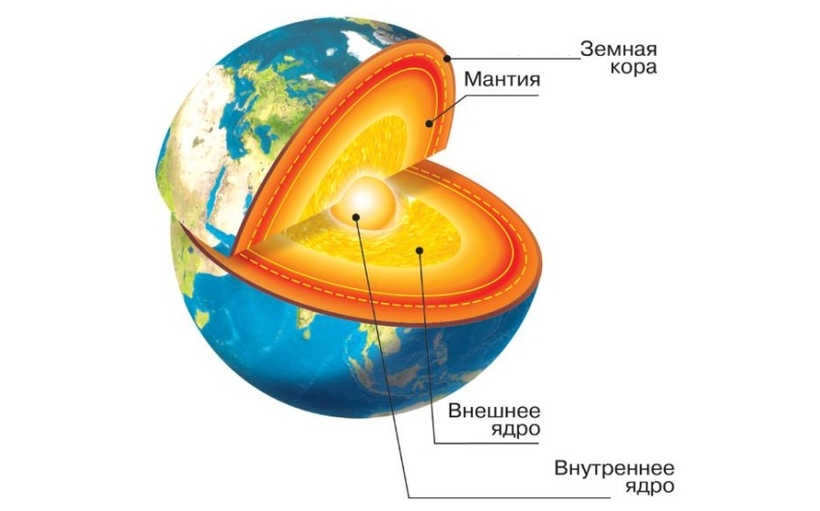
The outer and inner core
The outer region actually serves as the transitional area between the mantle and the solid core. Its chemical makeup closely resembles that of the inner core, but it does not solidify due to lower pressure. This characteristic is highly advantageous as it enables the presence of a unique magnetic field exclusive to our planet. This is an incredibly significant aspect as it shields the Earth from the majority of the Sun’s radiation.
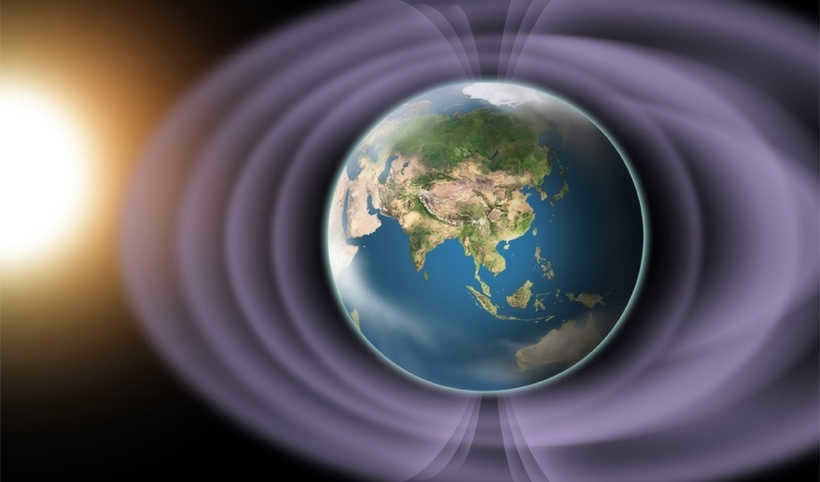
Regarding the core, it is composed of highly dense material and possesses a solid state. Its composition primarily consists of metals, particularly nickel and iron. These metals form crystals with a unique arrangement that enables them to withstand harsh environments. There have been recent speculations about the existence of a separate component known as the nucleus; however, this notion has yet to be substantiated.
Shifting focus from the mechanics of biosystems and delving further into the realm of small linear dimensions to gain insight into the fundamental physical constituents, we will briefly pause at the atomic scale – approximately 100 picometers, which is a magnitude of 10 billion (10 10 10 ) times smaller than a meter. Pinpointing the exact size of an atom proves challenging due to the dynamic nature of its electrons, which constantly orbit the nucleus without ever settling into a fixed position. Nonetheless, conventionally, the average distance between the electron and the nucleus is considered as the size of an atom.
When discussing the physical phenomena occurring at these minuscule scales, it is common to rely on visual depictions. However, it is important to keep in mind that these depictions are merely analogies. We have no alternative but to use them in order to describe unconventional structures that exhibit peculiar behavior from the perspective of everyday logic.

FIG. 14. A single atom appears minuscule in comparison to even the tiniest wavelength of visible light
This implies that attempting to observe the inner structure of an atom with the naked eye using visible light is as impractical as trying to thread a needle while wearing mittens. The wavelengths involved effectively “smudge” objects of smaller scales, making it impossible to obtain a clear image with them due to insufficient resolution. Consequently, when we seek to truly “visualize” quarks or even a proton, we are pursuing the unattainable. We simply lack the necessary tool to accurately depict the intricacies occurring within an atom.
However, it is a grave error for scientists to mistakenly conflate the human capacity to perceive certain phenomena with our certainty that these phenomena actually exist. Just because we are unable to physically observe these phenomena or form a mental image of them does not mean that we are incapable of logically deducing the physical elements and processes that occur at the relevant scales.
To illustrate, if we were to hypothetically consider the scale of the atom, the world surrounding us would appear astonishingly different. The laws of physics in this realm diverge greatly from those we are familiar with in our everyday lives, where we casually measure distances with rulers. The atomic world is a stark departure from the mental image we typically conjure when contemplating matter (Fig. 15).
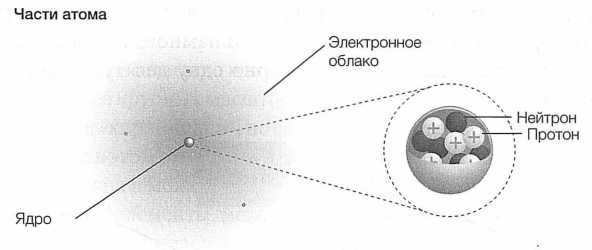
FIG. 15. The structure of an atom is characterized by electrons circling a central nucleus, which is composed of positively charged protons (each with a charge of one) and electrically neutral neutrons (with a charge of zero).
If we were to observe this structure on a microscopic level, one of the first and most significant findings would be that the atom is primarily composed of empty space[20]. The nucleus, located at the center of the atom, is approximately 10,000 times smaller in radius compared to the orbits of the electrons. The average size of a nucleus is about 10 -14 m (10 femtometers). The nucleus of a hydrogen atom is even smaller, being approximately 10 times tinier. This size comparison illustrates the vast emptiness of the atom, as the nucleus is analogous to the Sun when compared to the entire solar system. The atom is largely void, with the volume of the nucleus being only one trillionth of the total volume of the atom.
This is not the same as what we perceive and experience when we tap on a door or sip a refreshing drink through a straw. Our senses deceive us into believing that matter is seamless. However, when we examine matter at the atomic scale, we discover that it is predominantly composed of empty space; it’s just that our senses aggregate and smooth out all the minuscule components, giving the illusion of solidity and continuity. At the atomic level, the reality is quite different.
Quantum mechanics instructs us that electrons do not have a fixed location within the atom, as the classical worldview would suggest. Instead, we possess a probability distribution that informs us of the likelihood of finding an electron at a specific location at any given moment; probabilities are our only means of understanding. We can forecast the average position of an electron over time, but any individual measurement is influenced by the uncertainty principle.
It should be noted that these distributions are not random. Electrons can possess a wide range of energy or probability distributions. In the realm of classical theory, there is no comprehensible method to depict the orbit of an electron – it can only be described in terms of probability theory. Nevertheless, the probability distribution is a highly specific function. In the field of quantum mechanics, we are able to formulate an equation that depicts the wave solution for an electron, and this equation will provide us with the likelihood of locating the electron at a specific point in space.
Another fascinating feature of the atom, particularly from the perspective of classical Newtonian physics, is that electrons within the atom can only occupy fixed quantized energy levels. The orbits of the electrons are determined by their energies, and the specific energy levels and their associated probabilities must adhere to the principles of quantum mechanics.
In order to comprehend the atom, the presence of quantized levels of electrons is crucial. During the early 20th century, scientists started to acknowledge the need for a significant overhaul of the classical principles. According to classical physics, electrons revolving around the nucleus would be inherently unstable. Ideally, they would emit energy and swiftly descend towards the nucleus. In such a scenario, not only would the system fail to resemble an atom in any manner, but it would also preclude the existence of stable atoms, as we currently understand them.
In 1912, Niels Bohr was confronted with a challenging decision – whether to abandon classical physics or question the trustworthiness of observed data. Bohr made a wise choice, opting to discard classical laws and propose that they do not hold true at the minuscule distances between electrons within an atom. This pivotal conclusion played a crucial role in the development of quantum physics.
Quantum mechanics is undeniably a revolutionary scientific shift, but its significance is only apparent at the atomic level. Despite the radical nature of this new model, Bohr did not completely discard everything that came before. He did not claim that Newton’s physics was incorrect; rather, he proposed that the classical laws of mechanics do not apply to electrons within an atom. On a larger scale, matter is composed of such a vast number of atoms that quantum effects cannot be observed in isolation, and generally follows Newton’s laws, at least to the extent that the validity of the assumptions made on their basis can be evaluated. Newton’s laws are indeed true, and we recognize their applicability at the scales where they hold. However, at the atomic level, Newton’s laws inevitably break down – and do so in a striking manner, which ultimately led to the development of quantum mechanics.
This text is a brief preview.
Discover more
NUCLEAR BLAST IN A CRYSTAL
NUCLEAR BLAST IN CRYSTAL We are not discussing a crystal that has been caught in the vicinity of a nuclear explosion and deformed by the shockwave. Instead, we are referring to ordinary, tranquil circumstances in which the crystal maintains its visible qualities intact: its flawless shape and the
THE MYSTERY OF THE UNKNOWN
Rainer Maria Rilke, the renowned German poet, eloquently expressed the contradictory emotions that arise within us when we encounter something truly perfect: “Beauty initiates a sense of both awe and terror. / Although the initial impact may be overwhelming, we find solace in our ability to appreciate and admire its exquisite allure.
Atomic Mass
The current method of determining atomic or molecular mass involves comparing the mass of a specific atom to that of a hydrogen atom. A hydrogen atom is assigned a mass of approximately one atomic mass unit (1.66?10-24 g), so a carbon atom, for example, has a mass of 12 atomic mass units.
The Composition of the Earth’s Core
Have you ever wondered how scientists study the composition of the Earth’s core without physically accessing it? The Earth is composed of various layers, including a molten magma layer. Despite the Earth’s rotation around the sun, these liquid layers remain distinct. In the following sections, we will explore the concepts of the Earth’s core and lithosphere, and gain insights into the structure of the Earth’s geological layers.
Physical characteristics of the Earth’s core
Unraveling the mysteries of the Earth’s core presents numerous challenges, but determining its depth is not one of them. The outer layer of the core begins approximately 2,900 kilometers below sea level, within the Earth’s overall radius of 6,371 kilometers.
As one ventures closer to the planet’s interior, both pressure and temperature increase. For instance, a mine at a depth of 4 kilometers experiences temperatures of 60 degrees Celsius, while the deepest well, reaching over 12 kilometers, reaches temperatures of 180 degrees Celsius. The temperature rises approximately 25 degrees Celsius per kilometer of depth. On the outer layer of the mantle, temperatures can climb up to 1000 degrees Celsius. However, it is only within the Earth’s core where temperatures reach around 6000 Celsius, slightly lower than the surface of the Sun.
What exactly composes the Earth’s core?
If we were to compare the Earth’s structure to that of an egg, humanity has merely made superficial progress in understanding its composition. Geologists gain knowledge about the planet’s internal structure through indirect means, such as determining the size of the Earth’s core, analyzing the chemical makeup of its interior, and measuring its rotational speed. Due to the extreme pressure (several million atmospheres) and high temperatures within the Earth, direct exploration is impossible. Nevertheless, valuable insights can be gleaned through careful observation.
The core of the Earth is made up of two distinct layers, known as the outer and inner layers, which are separated by a gap known as the Lehman gap. The outer layer is primarily composed of a liquid alloy consisting of iron and nickel, which is heated to temperatures ranging from 4500 to 5500 degrees Celsius. On the other hand, the inner core is predominantly composed of iron, forming a spherical shape with a diameter of 1,220 kilometers. Geophysicists assert that the Earth’s core can be likened to a plasma ball, exhibiting properties of both a solid and a fluid due to the immense pressure it experiences.
The Earth’s core, with a radius of 3,740 kilometers, is twice the size of the Moon and slightly larger than Mercury. Despite its relatively small size, the mass of the Earth’s core is approximately 1.85 trillion tons, which accounts for almost a third of the planet’s total mass. Based on this information, it can be inferred that the core is composed of dense elements. However, if these elements were highly radioactive, it would have been impossible for life to emerge on Earth. Geologists also believe that the Earth’s core is primarily made up of iron.
Can the Earth’s core be expanding?
The Earth’s core is younger than the planet itself. Its temperature suggests that it was once a molten ball of rock during the formation of our planet. The intense heat and radioactivity during the solar system’s formation caused the Earth’s temperature to rise to 1,500 degrees Celsius, which is the melting point of iron. Over a span of 500 million years, lighter elements like silicates and oxygen compounds were able to rise to the surface, while droplets of nickel and iron were pulled downwards by gravity, forming the Earth’s core.
So, how do we go about studying the Earth’s deepest layer?
Meteorites also offer insights into the chemical makeup of Earth’s core. The majority of these celestial objects originate from the asteroid belt located between Mars and Jupiter, likely forming concurrently with our planet. By examining meteorites, we gain a deeper understanding of the formation of our solar system and the core of our home planet.
The Earth’s core remains a mystery, yet it plays a vital role in sustaining life on our planet. While we cannot directly study the core, its influence directly affects our well-being and overall health.
The core of planet Earth, located beneath the mantle, is believed to be made up of an iron-nickel alloy with traces of other siderophile elements. It is the central and deepest part of the Earth’s geosphere, with an estimated depth of 2900 km. The core has an average radius of 3.5 thousand kilometers and is divided into two parts: a solid inner core with a radius of approximately 1300 km, and a liquid outer core with a radius of around 2200 km. There is also a transition zone between these two regions. The temperature at the center of the core can reach up to 5000 C, with a density of about 12.5 t/m³ and a pressure of up to 361 GPa (3.7 million atm). The mass of the core is estimated to be between 1.932 and 10.24 kg.
Due to the inaccessibility of the core, very little direct information is available. Most of our knowledge comes from indirect geophysical and geochemical methods, as there are no samples of core matter for study.
A widespread misunderstanding
It is sometimes asserted [by whom?] that the core iron is the origin of the magnetic field of the Earth. This misunderstanding is rooted in the general public’s conception of a permanent magnet. However, the ferromagnetic characteristics of iron (as well as any metal in general) cease to exist above the Curie point. The actual source of the Earth’s magnetic field is a conductor in motion – either liquid metal or hydrogen.
Study History
Information must be verifiable or it may face scrutiny and removal.
You have the ability to modify this article by including references from authoritative sources.
This milestone was established on May 12, 2011.
Perhaps one of the first individuals to propose the existence of a region with higher density within the Earth was Henry Cavendish, who conducted calculations on the Earth’s mass and average density and discovered that it surpasses the density commonly associated with rocks that emerge from the Earth’s surface.
Its presence was ultimately confirmed in 1897 by German seismologist E. Wichert, and its depth of occurrence (2900 km) was determined in 1910 by American geophysicist B. Gutenberg.
V. M. Goldschmidt, the pioneer of geochemistry, put forward the idea in 1922 that the core was formed through gravitational differentiation of the primary Earth during its development or at a later stage.
Back in 1941, Kuhn and Ritman put forward a hypothesis suggesting that the core of the Earth is made up of metallic hydrogen, based on the belief that the composition of the Sun and Earth are identical and calculations regarding hydrogen phase transition. However, this hypothesis was never experimentally tested. Subsequent shock compression experiments revealed that the density of metallic hydrogen is approximately ten times lower than the density of the Earth’s core. Nevertheless, this hypothesis was later modified to explain the internal structure of gas giants like Jupiter and Saturn. Currently, it is widely assumed that the magnetic field of these planets is generated within their metallic hydrogen cores.
Moreover, V. N. Lodochnikov and U. Ramsay put forward the idea that the chemical composition of the lower mantle and the core is identical. They proposed that at the core-mantle boundary, which is at a pressure of 1.36 Mbar, the mantle silicates undergo a transition into a liquid metallic phase, thus forming a metallized silicate core.
Composition of the Core
The exact composition of the core is not known, but it can be estimated based on various sources. One possible source of information is iron meteorites, which are believed to originate from the cores of asteroids and protoplanets. However, it is important to note that iron meteorites may not be an exact match for the composition of the Earth’s core, as they were formed in much smaller bodies with different physical and chemical conditions.
However, the composition of the core can be determined from the data obtained through gravimetry, which provides information about its density. This, in turn, places certain limitations on its composition. The density of the core is approximately 10% lower than that of iron-nickel alloys, suggesting that it contains a higher proportion of lighter elements compared to iron meteorites.
Furthermore, geochemical considerations can offer insights into the composition of the core. By calculating the initial composition of the Earth and determining the fraction of elements present in other geospheres, it is possible to estimate the composition of the core. Experiments conducted at high temperatures and pressures, focusing on the distribution of elements between molten iron and silicate phases, can greatly aid in these calculations.
O.G. Sorokhtin put forward a hypothesis regarding the composition of the outer core, suggesting that it is made up of a substance known as “nuclear matter,” which does not exist under normal conditions. This “nuclear matter” is actually an oxide of univalent iron, Fe2O. Under pressures of 250-300 GPa, the “nuclear matter” decomposes into iron and oxygen. Therefore, the inner core, which experiences pressures greater than this range, is composed of iron with a small amount of nickel mixed in. According to Sorokhtin, over time, iron oxides from the Earth’s mantle sink into the core due to gravity and transform into “nuclear matter.” As a result, oxygen is released, and as the amount of iron oxides in the mantle decreases, more and more oxygen is released into the atmosphere. Up until the beginning of the Phanerozoic, there was very little oxygen produced. However, an increase in its concentration in the atmosphere during this time led to a significant surge in the development of life on Earth, known as the “Cambrian explosion.” It is predicted that an even greater increase in the partial pressure of oxygen in the Earth’s atmosphere in 500-600 million years (reaching approximately 0.5 MPa) will cause global warming and the extinction of all living organisms. Eventually, the ocean will completely boil away long before the Sun transforms into a red giant.
| 7.35 | 79.39 | 4.87 | 2.30 | 4.10 | 5820 | 7790 | 2530 | 3690 |
| 6.0 | 85.5 | 5.20 | 1.90 | 0 | 300 | 9000 | 2500 | 2000 |
English Literature
Additional Resources
Citations
1) Crust (Continental crust · Oceanic crust): Sedimentary layer – Upper crust -. Conrad Boundary – Lower crust – Lithosphere (Lithospheric plates) • Mohorovicich surface
2) Mantle: The Upper Mantle (Asthenosphere) – Seismic section 660 km – Lower mantle -. Gutenberg Boundary
3) Core: Outer core – Inner core
The Earth’s core is often referred to as the deepest central part of the planet. Due to the inaccessibility of the core, scientists rely on indirect methods to study it. However, considerable progress has been made in understanding this central region of the planet. There is still much more to learn, but current knowledge is quite extensive.
The outer core is situated approximately 2900 km below the surface. It boasts a radius of 3500 km. It is hypothesized that the core is composed of an alloy of iron and nickel, with traces of various elements such as sulfur, oxygen, silicon, chromium, phosphorus, and others. Given its immense temperature of around 5-6 thousand degrees, the core is a rather uniform mass. Additionally, due to its iron composition, the core carries a significant weight, accounting for one-third of the planet’s overall mass.
Moreover, the core is further divided into two segments: the inner core and the outer core.
The solid inner core of the Earth has a radius of 1,300 kilometers. The temperature on the outer part of the inner core fluctuates around 6000 degrees, and while the exact temperature at the center is uncertain, it is unlikely to differ significantly. Additionally, the inner core has a high density of approximately 12 tons per cubic meter and is under immense pressure.
In contrast, the outer core exists in a liquid state and comprises the majority of the Earth’s core. Acting as a protective shell, the outer core surrounds the inner core from all sides. This layer has a thickness of about 2,200 kilometers. Occasionally, a transitional zone between the two distinct parts of the core arises, possessing properties from each section.
The significance of the Earth’s core
The impact of the Earth’s core on the planet remains uncertain. Due to limited understanding, our knowledge about it is only fragmentary. However, one crucial function is well-established. The core is responsible for generating the magnetic field that shields the Earth from solar and cosmic radiation. Specifically, it is the liquid outer part of the core that plays this role. The movement of the liquid within the core creates the geomagnetic field. In essence, the core acts as a battery for the planet, as the absence of its rotation would result in the loss of Earth’s protective shield.
The mantle of the planet
The Earth’s mantle is divided into an upper and lower mantle, as these two layers possess distinct properties. Collectively, they have a thickness of 2900 km.
Minerals
Mineral deposits are created through a variety of geological processes that take place beneath the layers of the Earth.
Using the seismic method, scientists have discovered the Earth’s interior is made up of different layers: the core, mantle, and crust.
The Earth’s internal structure can be likened to that of an apple, with the crust representing the peel, the mantle being the pulp, and the core serving as the core itself.
At the heart of the Earth lies the core, which is the central region of the planet. It is characterized by extremely high pressure and temperatures ranging from +4000°C to +5000°C. Comprised mostly of dense and heavy matter, likely iron, the core constitutes 30% of the Earth’s mass but occupies only 15% of its volume.
Located at a depth exceeding 2900 km, the core has a radius of approximately 3550 km, with the inner core measuring 1300 km and the outer core extending to 2250 km.
The solid inner core seems to be buoyant within the liquid outer core, resulting in a motion that generates a magnetic field around the Earth. This magnetic field shields our planet from harmful cosmic rays and is responsible for the response of a compass needle.
The mantle is composed of solid material, but it is less dense than the core. The pressure and temperature within the mantle (on average)
Within the upper portion of the mantle lies a layer known as the asthenosphere, where the material is partially melted and malleable. It is through this layer that the solid layers above it move.
The Earth’s crust is the outermost and thinnest layer of the Earth, and it is also the hardest. Its greatest thickness (8-40 km) is 90 times smaller than the radius of the Earth. The Earth’s crust makes up less than 1% of the Earth’s mass and approximately 5% of its volume.
Oxygen, silicon, aluminum, and iron are the predominant elements in the Earth’s crust. As you go deeper into the Earth’s crust, starting from a depth of 20 to 30 km, the temperature gradually increases by an average of 3°C for every 100 meters.
Lobzhanidze A. A. Geography. Planet Earth. 5-6 grades: textbook. for general educational institutions with an appendix on electronic media. – Moscow: Enlightenment, 2013. – 159 p.


Every planet possesses a central core, which is typically composed of multiple layers. This core serves as the fundamental structure for a spherical celestial body. The substances found within the core exhibit peculiar properties. For instance, iron, which resides in the deep central regions of the planet, can undergo crystallization or exist in a liquid state.
What is the Core of the Earth?
The Earth’s core is the innermost part of our planet, situated beneath the mantle and predominantly made up of a combination of iron and nickel. It is composed of two distinct layers.

Exploring the characteristics and structure of the core presents a formidable challenge due to its location approximately 2900 km beneath the surface. As one delves further into the depths of the planet, the temperature rises incrementally, wreaking havoc on electronic devices and other technical apparatus.
Traversing through the lithosphere requires overcoming a scorching layer of mantle. The most profound drilling ever conducted into the Earth’s core took place on the Kola Peninsula in 1991. This well reached a depth of 12,262 meters, with temperatures surpassing 200°C. A probe project was initiated in 2000 to delve further into the Earth’s depths. However, the creation of this device necessitates detonating multiple nuclear bombs and subsequently pouring copious amounts of liquid metal into it. Moreover, the probe must be constructed with a material capable of withstanding temperatures ranging from +2000 °C to +3000 °C.
All existing knowledge about the Earth’s central region has been acquired through seismic wave observations. Scientists also monitor the magnetic field to investigate the core’s rotation.
Composition and structure
Despite the challenges associated with exploring the core of our planet, researchers have successfully determined the physical characteristics of the planet’s “heart.” The central part of our planet primarily consists of iron, which exists in both liquid and crystalline states. Additionally, there is believed to be nickel present in the composition of our celestial body’s core.

Dimensions
The core sphere has an average circumference of 3500 km. The inner solid part measures 1300 kilometers in radius, while the upper liquid layer has a thickness of no more than 2200 km.
No one has yet been able to reach the most inner part of the heavenly body. The volcanic lava melts at a depth of 220-300 km, and the creation of valuable gemstones (such as diamonds) does not occur below 500 km. Anything beyond that remains a puzzle. However, researchers have discovered a method to provide an answer to the query “How far is it to the Earth’s core?” through the utilization of seismology.

Earthquakes generate powerful seismic waves that propagate throughout the planet. However, when seismic shocks occur on one side of the Earth, these oscillating waves are attenuated on the opposite side. Upon analyzing this data, scientists have reached the conclusion that S-waves rebound and collide with the solid and liquid layers.
Upon reconstructing a map of the oscillating wave movements, experts have discovered that there are liquid rocks at a distance of 3000 km.
Mass
By studying the gravitational field of our planet, researchers have determined that its mass measures 5.9 sextillion tons (59 20 ). The surface layer has a lower density compared to the overall average, suggesting that the planet’s interior comprises solid and dense rocks. Additionally, the weight of the liquid layer makes up 30% of the total mass of the planet.
It is common knowledge that the deepest central portion of our planet consists of two distinct layers: an outer layer composed of liquid and an inner layer composed of solid materials. Between these layers, at a staggering pressure of 3.3 million atmospheres, the temperature ranges from +6000°C to +6500°C. This temperature range surpasses even that of the Sun. The outer core, which is hotter than the inner core, continuously emits powerful streams of magma that spread outwards towards the mantle’s surface. Through the friction generated between the outer layer and the Earth’s center, the temperature continues to rise. As a result of these processes, the “heart” of our planet remains heated and does not cool down. The Earth’s inner solid layer is formed from the cooled and crystallized remnants of iron, indicating that the Earth does not have enough time to cool down completely. Scientists theorize that, over time, the entire central section may solidify, marking the beginning of the planet’s demise.


